Martin Molin Modulin - the origins and anatomy of a DIY instrument
In a few videos of the legendary creators of the Shaitan-device with balls, the Wintergatan group, an equally interesting tool is demonstrated - Modulin. As in the case of other DIY experiments of the collective, the creator of the device is Martin Mulin.
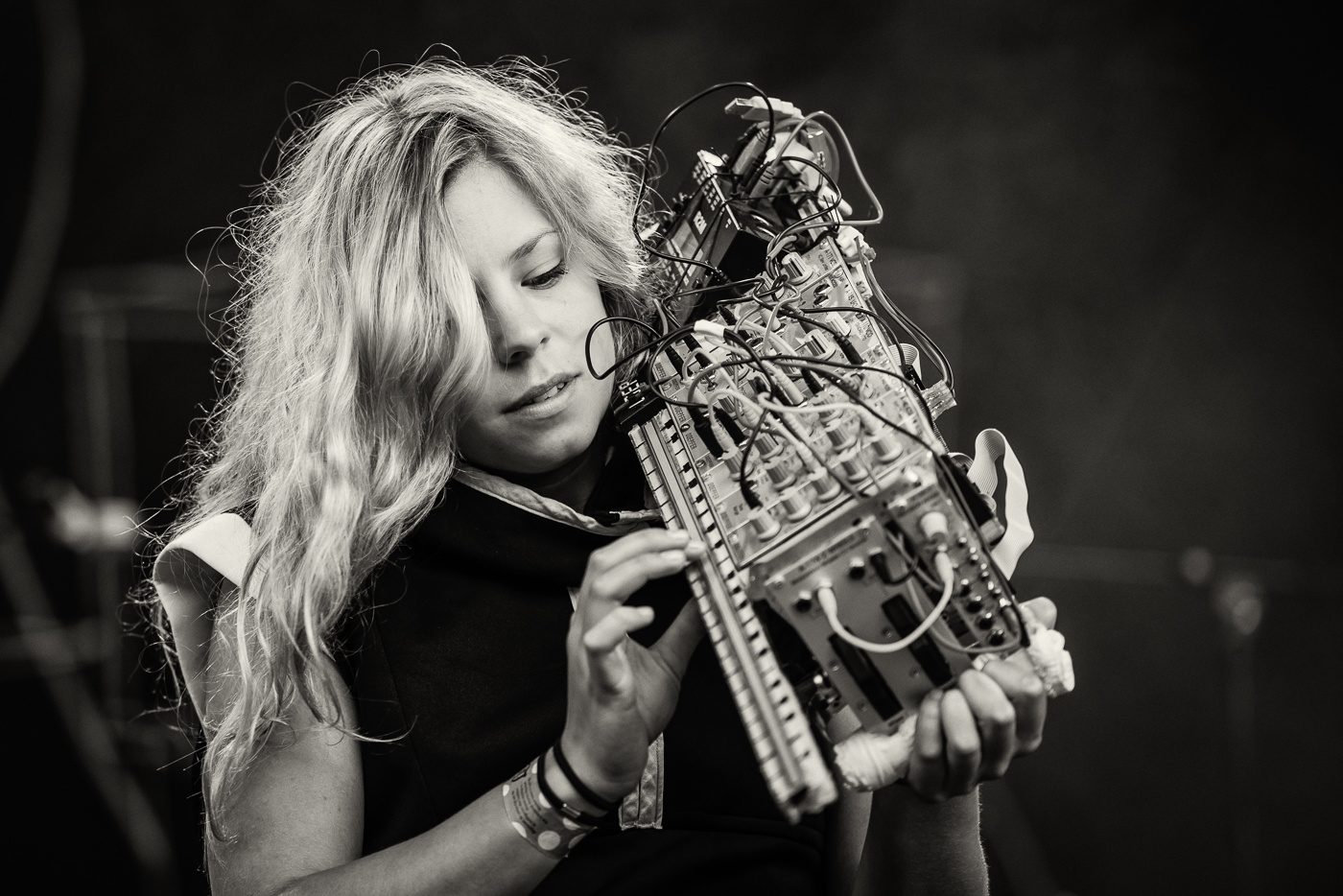
The unusual brutal appearance of the “sensory violin” Mulin: the fingerboard attached to the panel with a large number of knobs, connectors and wires is impressive. A few unusual are the technique of sound and sound capabilities of the device. In fact, this is a full-fledged monophonic analog synthesizer with a rather wide sound palette, where instead of the standard keyboard a kind of “touch” fingerboard is used (Ribbon controller). Looking under the cat, you can learn more about the instrument, its components and its analogues in the past.
(PS The material does not contain news, therefore I ask people who are vigilantly watching Wintergatan to do without comments from the “etzhbayan” cycle. Thanks in advance ”)
When I first saw this impressive unit, I thought that Martin independently created all the blocks and killed a lot of time. Everything turned out to be easier. He simply compiled the modules released by Doepfer to get the ergonomics and functionality he needed. That is, if it is fair to approach the question of authorship, Mulin is more likely the developer of the layout scheme (in my opinion, very successful and interesting) and the designer of his brainchild.
We can safely say that the closest ancestor of modulin is the electronic cello of the legendary Lev Theremin. It is known that Theremin created the griffless stringless electronic instrument in the early 30s, working in the USA. Cello sounds were extracted by touching the fingerboard to the fingerboard, and a special lever acted as a volume pedal.
Later, in 1965, already working at the Musical Acoustics Laboratory of the Moscow Conservatory, Termen developed the concept of his invention and proposed to equip the “griffed electronic instrument” with the possibility of harmonious accompaniment of the main tone using a special keyboard. This function was planned to be implemented using an additional voltage control generator.
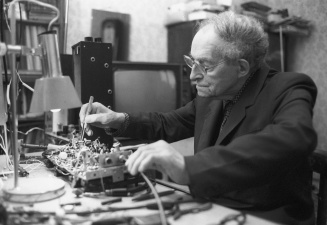
Unfortunately, in the distant 1965 instrument of Theremin was not destined to appear in the form of serial samples. Fateful for the inventor of the article in Western publications that he was alive, had a pitiful effect on his work at the conservatory, from which the legendary engineer was dismissed without a twinge of conscience. Tool prototypes were destroyed.
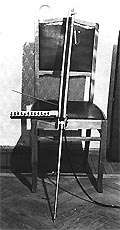
In addition, in different years of the past and present century, a sufficiently large number of tools appeared, which to some extent can be considered the predecessors of Modulin. Practically all these developments are related to the use of the control interface, and accordingly, the basic method and techniques of sound extraction. This interface has become the so-called Ribbon controller.
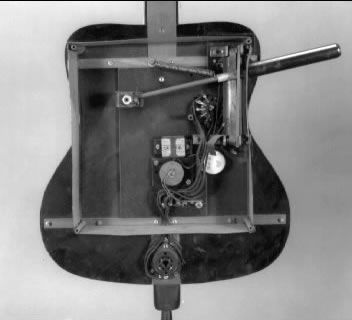
The device, in many respects analogous to the “Termen” “touch” neck, was used in such instruments as Trautonium, Tannerin, Dewanatron (Swarmatron). The reason for the relatively wide use of the Ribbon controller is the possibility of simplified glide path reception, as well as the possibility of creating some more convenient effects.
The archaic ribbon controllers were replaced by new midi instruments with the same virtues. For Modulin, the Ribbon controller Doepfer R 2M was used, which can be used for both analog (CV / Gate) and digital (Midi) controls. It should be noted that all the modules used in the tool are made by Doepferr.
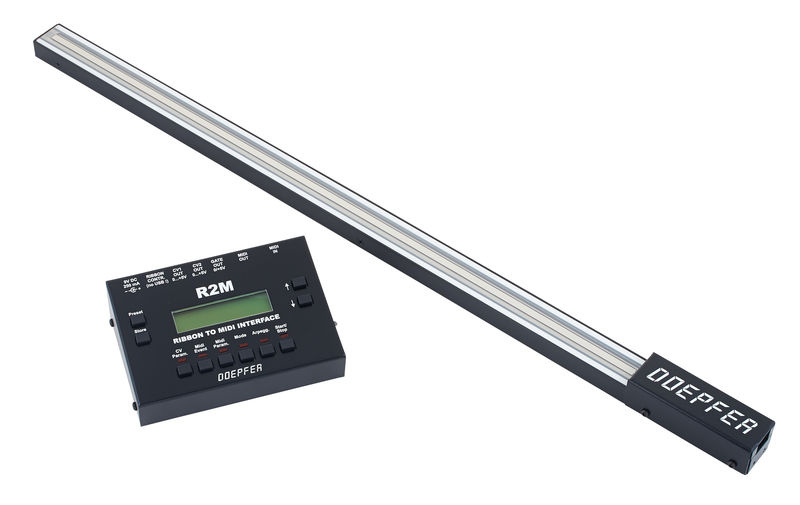
There is an assumption that Mulin uses their devices not only because of the notorious German quality, but also because this company is the official successor of the great Friedrich Trauvine and Oscar Sal (the fathers of trautonium).
The controller consists of two parts, the actual “touch” resistive fingerboard and the control unit, which receives data about the position of the fingers from the fingerboard and converts them into a Midi and CV / Gate signal.

Interestingly, pressure (pressure) sensors are installed in the controller (on the fretboard), which allow to obtain additional features during execution.
The performance dynamics is realized thanks to a block with two modulation wheels. One wheel is responsible for frequency modulation, the other for amplitude, like the lever in the Theremen's cello. The Doepfer A-174-2 block is used in the original Mulina tool.
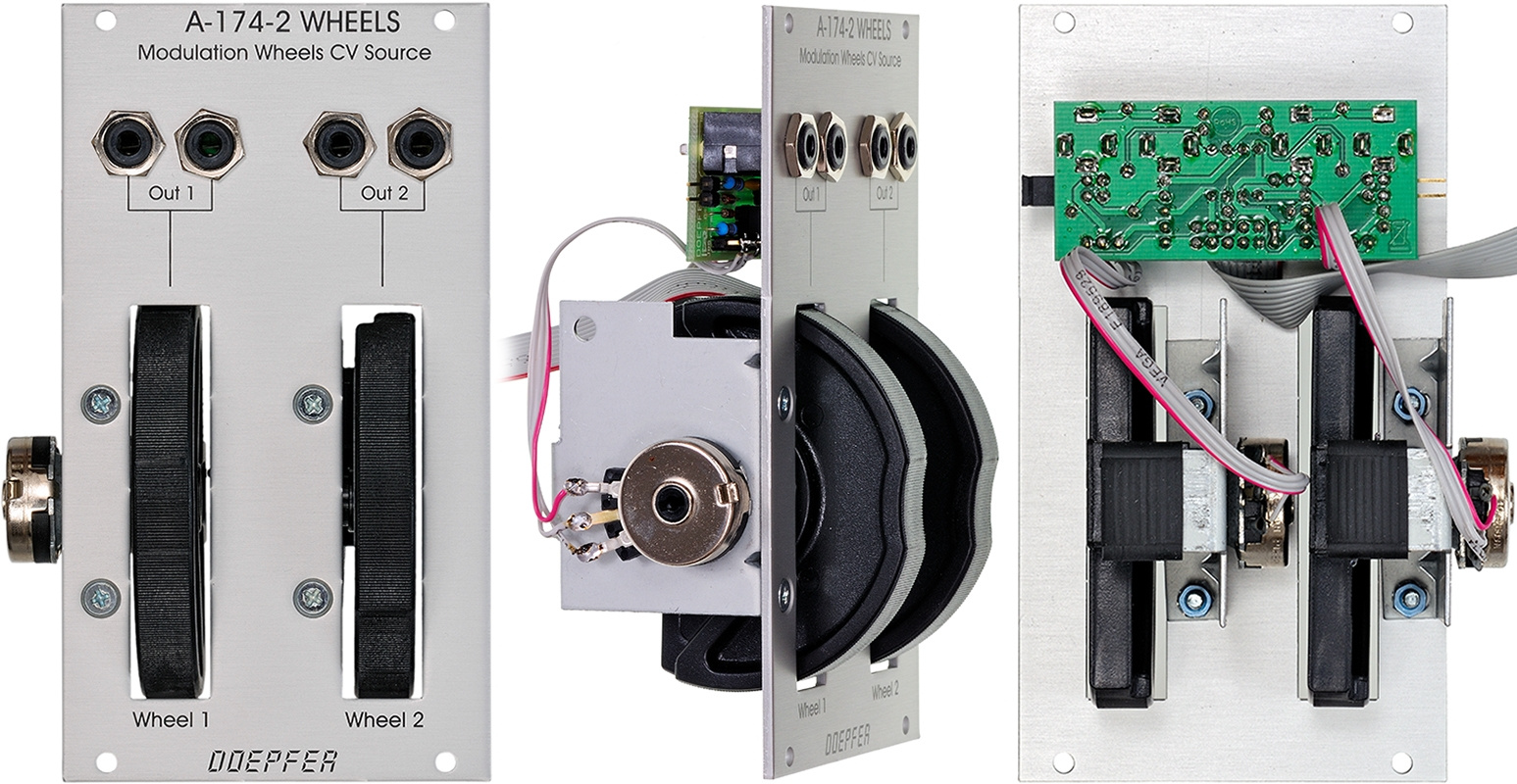
The core of the instrument is a voltage controlled oscillator, in many respects similar to those used for synthesizers of the 60s - 70s. In the original design of this Doepfer A-110-1 Standard VCO. The device generates signals in the frequency range of 7 octaves from 15 Hz to 8 kHz and allows the use of 4 waveforms: square, sawtooth, triangular and sinusoidal.
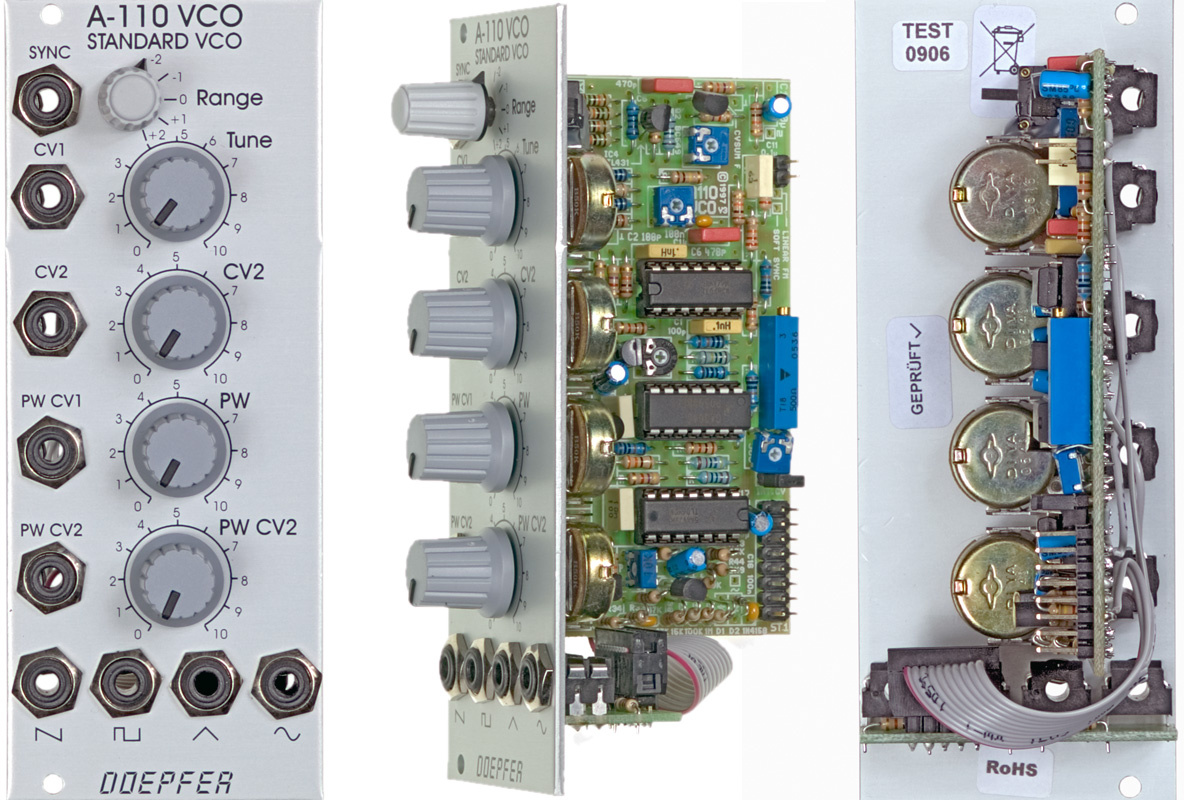
To control the duration of the sound - the standard parameters of the ADSR, attack, decay, support and attenuation, use the appropriate envelope generator (A-140 ADSR Envelope Generator), which has 4 controllers respectively (Attack, Decay, Sustain and Release).
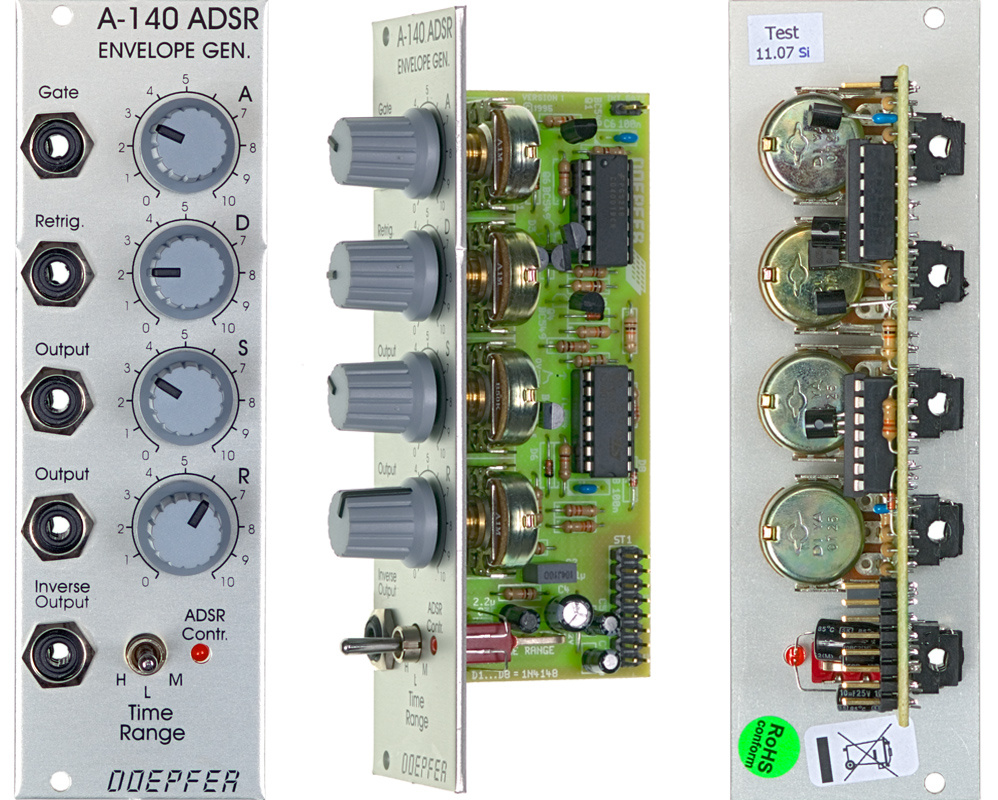
The rich, rich sound of the instrument and the possibility of its change are achieved thanks to the use of the A-120 24dB Low Pass filter, with which you can determine the cutoff frequency. Doepfer posted on the official website a proud message that they were able to fully replicate the sound and capabilities of the original Moog synthesizer filter in the A-120.

The tool allows you to adjust the speed of the vibrato, used Doepfer A-145 LFO Modulation Generator. The generation of control signals with five waveforms is available: sawtooth, inverted sawtooth, triangle, sine and square wave.

Realistic portamento, almost like a real violin, is provided with the use of a limiter (output voltage rise rate limiter) A-171-1 Voltage Controlled Slew Limiter.

A-185-2 Precision CV Adder precision voltage adder was used to adjust the modulation depth, change its polarity, fine-tuning, and octave switching.
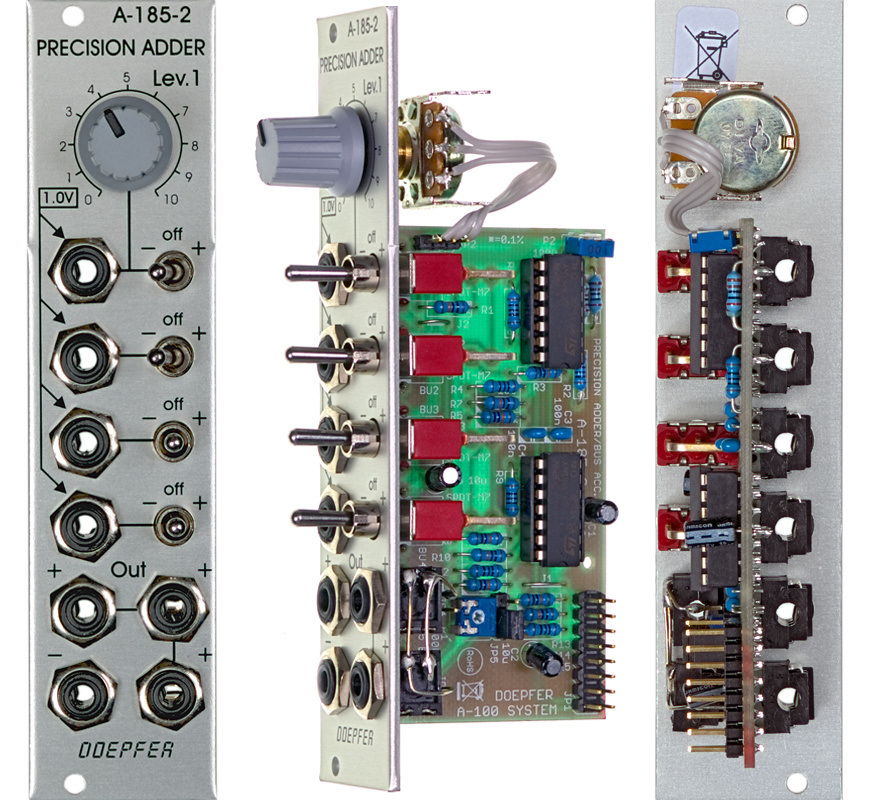
All these blocks are fixed on a piece of plywood and appropriately commuted. For convenient holding of the instrument, a handle is attached to the plywood, which allows holding Modulin like a violin and at the same time controlling amplitude modulation and pitch. Next - food, gain and forward to the experiments!

Among the used modules and materials, the most expensive one costs about 280 Euros (ribbon controller), the cheapest is 40 Euros. According to my not very accurate calculations, without taking into account the time spent and the effort, the assembly of the tool cost Martin no more than 1,300 Euros. If, of course, all the modules that interested him were not provided by Doepfer for free as a promotional investment or out of a great love for electronic music.
To talk about how his instrument works and how it may sound, Martin Moulin recorded a special video where he describes the techniques and practical use of various blocks.
Unfortunately, the open circuits did not meet the switching circuits of the instrument, but I believe that minimal knowledge of the principles of operation of analog synthesizers and datasheets of manufacturers will help not to be mistaken when connecting blocks. As a mass DIY concept, the device is certainly expensive, but the use of a midi-controller opens up wide possibilities for using digital emulators instead of analog iron.
It is also worth noting that ribbon controllers are quite popular among music experimenters, especially in Japan and the USA, but Martin Mulin is one of those not many who can be interested not only in the experiment with an unusual instrument, but also in the quality of the works created.

The unusual brutal appearance of the “sensory violin” Mulin: the fingerboard attached to the panel with a large number of knobs, connectors and wires is impressive. A few unusual are the technique of sound and sound capabilities of the device. In fact, this is a full-fledged monophonic analog synthesizer with a rather wide sound palette, where instead of the standard keyboard a kind of “touch” fingerboard is used (Ribbon controller). Looking under the cat, you can learn more about the instrument, its components and its analogues in the past.
(PS The material does not contain news, therefore I ask people who are vigilantly watching Wintergatan to do without comments from the “etzhbayan” cycle. Thanks in advance ”)
When I first saw this impressive unit, I thought that Martin independently created all the blocks and killed a lot of time. Everything turned out to be easier. He simply compiled the modules released by Doepfer to get the ergonomics and functionality he needed. That is, if it is fair to approach the question of authorship, Mulin is more likely the developer of the layout scheme (in my opinion, very successful and interesting) and the designer of his brainchild.
Origins
We can safely say that the closest ancestor of modulin is the electronic cello of the legendary Lev Theremin. It is known that Theremin created the griffless stringless electronic instrument in the early 30s, working in the USA. Cello sounds were extracted by touching the fingerboard to the fingerboard, and a special lever acted as a volume pedal.
Later, in 1965, already working at the Musical Acoustics Laboratory of the Moscow Conservatory, Termen developed the concept of his invention and proposed to equip the “griffed electronic instrument” with the possibility of harmonious accompaniment of the main tone using a special keyboard. This function was planned to be implemented using an additional voltage control generator.

Unfortunately, in the distant 1965 instrument of Theremin was not destined to appear in the form of serial samples. Fateful for the inventor of the article in Western publications that he was alive, had a pitiful effect on his work at the conservatory, from which the legendary engineer was dismissed without a twinge of conscience. Tool prototypes were destroyed.
In addition, in different years of the past and present century, a sufficiently large number of tools appeared, which to some extent can be considered the predecessors of Modulin. Practically all these developments are related to the use of the control interface, and accordingly, the basic method and techniques of sound extraction. This interface has become the so-called Ribbon controller.

The device, in many respects analogous to the “Termen” “touch” neck, was used in such instruments as Trautonium, Tannerin, Dewanatron (Swarmatron). The reason for the relatively wide use of the Ribbon controller is the possibility of simplified glide path reception, as well as the possibility of creating some more convenient effects.
Anatomy
The archaic ribbon controllers were replaced by new midi instruments with the same virtues. For Modulin, the Ribbon controller Doepfer R 2M was used, which can be used for both analog (CV / Gate) and digital (Midi) controls. It should be noted that all the modules used in the tool are made by Doepferr.

There is an assumption that Mulin uses their devices not only because of the notorious German quality, but also because this company is the official successor of the great Friedrich Trauvine and Oscar Sal (the fathers of trautonium).
The controller consists of two parts, the actual “touch” resistive fingerboard and the control unit, which receives data about the position of the fingers from the fingerboard and converts them into a Midi and CV / Gate signal.

Interestingly, pressure (pressure) sensors are installed in the controller (on the fretboard), which allow to obtain additional features during execution.
The performance dynamics is realized thanks to a block with two modulation wheels. One wheel is responsible for frequency modulation, the other for amplitude, like the lever in the Theremen's cello. The Doepfer A-174-2 block is used in the original Mulina tool.

The core of the instrument is a voltage controlled oscillator, in many respects similar to those used for synthesizers of the 60s - 70s. In the original design of this Doepfer A-110-1 Standard VCO. The device generates signals in the frequency range of 7 octaves from 15 Hz to 8 kHz and allows the use of 4 waveforms: square, sawtooth, triangular and sinusoidal.

To control the duration of the sound - the standard parameters of the ADSR, attack, decay, support and attenuation, use the appropriate envelope generator (A-140 ADSR Envelope Generator), which has 4 controllers respectively (Attack, Decay, Sustain and Release).

The rich, rich sound of the instrument and the possibility of its change are achieved thanks to the use of the A-120 24dB Low Pass filter, with which you can determine the cutoff frequency. Doepfer posted on the official website a proud message that they were able to fully replicate the sound and capabilities of the original Moog synthesizer filter in the A-120.

The tool allows you to adjust the speed of the vibrato, used Doepfer A-145 LFO Modulation Generator. The generation of control signals with five waveforms is available: sawtooth, inverted sawtooth, triangle, sine and square wave.

Realistic portamento, almost like a real violin, is provided with the use of a limiter (output voltage rise rate limiter) A-171-1 Voltage Controlled Slew Limiter.

A-185-2 Precision CV Adder precision voltage adder was used to adjust the modulation depth, change its polarity, fine-tuning, and octave switching.

All these blocks are fixed on a piece of plywood and appropriately commuted. For convenient holding of the instrument, a handle is attached to the plywood, which allows holding Modulin like a violin and at the same time controlling amplitude modulation and pitch. Next - food, gain and forward to the experiments!

Tool cost
Among the used modules and materials, the most expensive one costs about 280 Euros (ribbon controller), the cheapest is 40 Euros. According to my not very accurate calculations, without taking into account the time spent and the effort, the assembly of the tool cost Martin no more than 1,300 Euros. If, of course, all the modules that interested him were not provided by Doepfer for free as a promotional investment or out of a great love for electronic music.
Total
To talk about how his instrument works and how it may sound, Martin Moulin recorded a special video where he describes the techniques and practical use of various blocks.
Unfortunately, the open circuits did not meet the switching circuits of the instrument, but I believe that minimal knowledge of the principles of operation of analog synthesizers and datasheets of manufacturers will help not to be mistaken when connecting blocks. As a mass DIY concept, the device is certainly expensive, but the use of a midi-controller opens up wide possibilities for using digital emulators instead of analog iron.
It is also worth noting that ribbon controllers are quite popular among music experimenters, especially in Japan and the USA, but Martin Mulin is one of those not many who can be interested not only in the experiment with an unusual instrument, but also in the quality of the works created.
All Articles